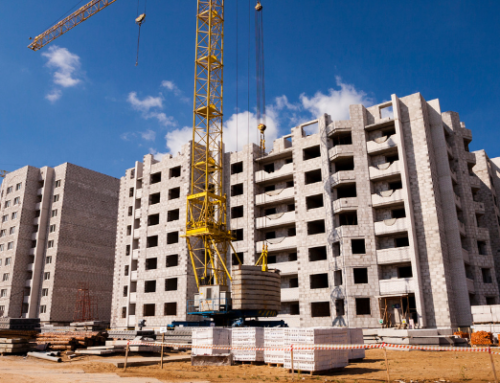The current risk landscape
The challenging economic climate continues to impact companies across many sectors, and senior leaders are feeling the pressure. This can be seen in the issues affecting high street retailers, with the recent Wilko collapse leading to the likely loss of 12,000+ jobs. In construction, fears over reinforced autoclaved aerated concrete (RAAC) dominate headlines, while hospitality is also experiencing a severe fall in demand because of the cost-of-living crisis and higher interest rates.
It’s not surprising that insolvencies are rising. In July, England and Wales saw the highest quarterly number of insolvencies since early 2009. Difficulties repaying pandemic loans, along with other soaring expenses made these figures inevitable. Even the property market, which has appeared invincible for so many years, is now troubled, with house prices falling 4.6% in the year to August.
Typically, an economic downturn brings a rise in litigation, with companies more likely to be affected by late payments, employment disputes and suppliers unable to meet their obligations. There can also be a rise in crime, this is already being seen in retail, with more shoplifting and fraud. However, the difficulties caused by the current backlog in courts means having access to specialist legal advice at an early stage, which is offered by many legal expenses insurance policies, allows business leaders to know the correct procedures to follow, whether litigation should be pursued, or if other routes could be taken.
James Barclay, head of sales and distribution at Allianz confirms this:
“When there’s a recession, we tend to see more litigation. Whether we enter or avoid one is a moot point as economists have differing views. But, continued high energy prices, mixed with shortages of supplies and labour, mean it’s extremely hard out there. Some firms report problems stemming from Brexit, either workforce shortages or issues with their exports. The invasion of Ukraine continues to prove hugely damaging overall, hiking energy costs. We’re not alone in the UK being impacted, but there are certainly many challenges being experienced here.”
Below are how these pressures are affecting property owners, the construction industry, and employers in general, along with the benefits of seeking legal advice to avoid costly litigation.
The changing legal landscape for property owners
New demands on landlords
Property is facing an onslaught of problems, which can be seen in both the commercial and residential sectors. These are resulting in more lawsuits connected to contract challenges, deals falling through and matters such as tenant disputes and evictions.
Empty high street shops are a common sight across the UK, with rising levels of crime. Prestige office blocks no longer hold the same cachet of years gone by, with companies allowing more remote and hybrid working, which again affects local businesses such as shops, cafes and restaurants.
This is a time of flux. Although there’s some pushback against hybrid working, companies are realising it often leads to greater staff loyalty. Consequently, there’s more consolidation and a move towards shared workspaces. Landlords are having to deal with more defaults and requests to suit flexible requirements.
There can be issues around rent levels, and if there should be a change of use from commercial to residential, for example, including student accommodation and hotels. But this is far from risk free, and against the backdrop of an economic slump, it’s clear that commercial property owners have some difficult choices ahead.
Residential landlords have their own challenges. Economic problems mean tenants will struggle more to pay rent. Fewer students may choose university and instead choose an apprenticeship closer to home. There are also concerns about the upcoming Renters (Reform) Bill and whether this will result in a less favourable environment for landlords.
Risks affecting property owners
Even if a landlord has a large property portfolio, there can be no room for complacency as criminality remains a problem. In July 2023, it was reported that more than 1,000 cannabis farms had been raided by the police across the UK.
The illegal cultivation of cannabis can occur in privately rented properties, that look quite innocuous on the outside and in built-up areas. James Barclay says “There’s a perception that this occurs in remote rural areas or in industrial buildings, but this isn’t the case. Landlords need to be aware of the problem or they could face prosecution, jail or having the property seized if tenants are found to be running a cannabis farm.”
He adds that one of the best mitigation strategies is to ensure that there’s rigorous referencing. “Too often, a tenant may appear legitimate, but they have provided false information relating to their employment and previous accommodation. Bank account details should also be verified. There needs to be proper validation and landlords should ensure there’s regular checks made internally and externally, at least every six months and these should be recorded.”
Checks should also be made that tenants aren’t sub-letting. This can be more challenging for the large landlord, but the problem is reportedly increasing because of the rising cost of living. It’s relatively easy to list a spare room, and a tenant may not gain permission from the landlord. This practice is likely to invalidate the landlord’s insurance and it might also result in a property being run as a house in multiple occupation (HMO), which must be licenced. This in turn could result in the landlord being prosecuted for health and safety breaches and being fined.
The legal landscape for the construction sector
The construction sector is under pressure
Those running construction firms will be keenly aware of bumps in the road, and are well used to dealing with legal disputes that are often highly technical. Disagreements over contracts, problems with sub-contractors, delays emanating from supply chain issues or other reasons, design errors and health and safety failings are just some examples.
Interest rate rises have hit the construction sector hard, with PwC predicting it will contract by some 8% this year, which is largely attributed to the slowdown in house building.
There are also growing numbers of insolvencies, 4,280 firms went under in the 12 months to June – this is 16.5% more than the same period last year according to the Insolvency Service. Construction employers are also likely to be experiencing difficulties with their workforces, it has long been reported that shortages of workers are one of the biggest problems. Talks of strikes continue in the engineering construction sector, while more skilled workers are moving abroad to countries such as Saudi Arabia and Australia.
These factors often lead to a less safe working environment and more likelihood of construction firms being sued. Recent figures from the HSE show construction continues to have the highest number of fatalities, most often caused by falls from height.
Recent years have seen important progress in improving building safety, including in the programme to remove dangerous cladding in the wake of the 2017 Grenfell Tower tragedy.
Regulations for high-risk buildings now mean that those over 18 metres in height or with at least seven floors need to be registered by this October. Although there are some exceptions, including hotels, hospitals and military barracks.
Failing to register a building that’s inhabited will be a criminal offence. This, along with the new fire safety guidance which also comes into force in October will boost accountability, ensure records are kept up to date and allow residents to know more about standards within their buildings. This is alongside making it easier to take enforcement action.
If progress is occurring in some areas, there’s always more to be done, and a case in point is RAAC. Although school closures are dominating the headlines, the potentially dangerous material has also been used in other buildings. To date, there has been no survey of social housing, although it’s understood not to be in widespread use.
The legal ramifications for employers
Responsibilities for employers
The mid-corporate sector is exceptionally varied, but one factor they all have in common is being employers. The economy means some firms are putting a hold on their expansion plans or even planning redundancies, something that must be carefully handled with expert guidance.
Environmental, social and governance (ESG) issues are increasingly on the agenda and Barclay says many companies are already embedding this into their business.
Environmental risks can be around managing responsibilities regarding climate change and sustainability as well as reducing the likelihood of any polluting activities. Social risks tend to focus on issues such as diversity and inclusion, managing data privacy and ensuring the workplace is well run with good community relations. Governance relates to a company’s policies and the integrity of these, its approach to transparency and avoiding all forms of corruption in meeting its tax obligations.
Hybrid and remote working has already been highlighted. However, there can be risks with compliance and problems with monitoring and health and safety. Setting up clear policies and seeking advice early should be a priority. Employers are also likely to need guidance on so-called ‘family friendly’ rights and a private members’ bill is currently passing through parliament that should provide clarity on the ability to request a more predictable working pattern.
The UK currently has relatively low levels of unemployment, which can allow more employees who are dissatisfied with their jobs to switch to another employer. But, where there are more serious issues, they may seek to act via an employment tribunal. Delays in the system are bad news both for the employee and the employer, which is why companies may be looking to agree to more settlement agreements in future. These legally binding contracts can be used to resolve matters without the need to go to court.
Another issue for employers is immigration compliance, workforce shortages may prompt employers to look at bringing in staff from overseas, but it’s essential to ensure these employees have the legal right and correct documentation. If not, the company can face substantial fines, which have been increased recently.
Meanwhile, looking at the wider picture, the current trading environment is exceptionally tough. A slight fall in inflation may be signalling possible recovery, even if we’re yet to see confidence return. Notably, the British Chambers of Commerce marginally upgraded its 2023 GDP forecast to 0.4%, although it still sees weak activity throughout 2024 and 2025, a slight glimmer of hope.
Even so, the mid-corporate sector looks likely to have some difficult waters to navigate for many months to come and insurance protection in all its forms makes more sense than ever. In terms of legal threats, these can affect businesses in myriad ways and are both growing and can develop quickly. Therefore, now more than ever, businesses should seek comprehensive support to deal with the unexpected through the reassurance of legal expenses and ready access to expert counsel.
We are here to help
If you are concerned about how this affects you and your business and would like support in assessing your needs, we are here to help. Please do get in touch for confidential advice and guidance.
This article was adapted from an article by Allianz which can be found here.






